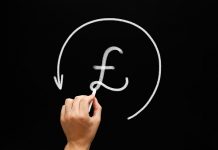Unseasonably warm weather in February held down spending in February, but income gains suggest the weakness should be temporary. Inflation continues to firm and has returned to the Fed’s target.
Income Solid, While Spending Held Down by Utilities
As expected, income among U.S. households posted another solid gain in February. Personal income rose 0.4 percent, while income growth for January was revised up a tick to 0.5 percent. With strong payroll gains and an uptick in average hourly earnings last month, income from wages & salaries rose a touch ahead of the headline in February.
Spending, on the other hand, came in a bit below expectations, increasing just 0.1 percent. Weakness in utilities consumption once again depressed the headline; this year was the second warmest February in the contiguous U.S. since records began back in 1895. In addition, a near 3 percent drop in gasoline & energy prices depressed nominal consumption on energy goods over the month. The upshot of the weakness in spending is that the saving rate rose to a four-month high of 5.6 percent.
At Last, Inflation Reaches the Fed’s Target
Inflation showed further signs of firming in February. Headline inflation is now above the Fed’s 2.0 percent target for the first time since 2012. The PCE deflator ticked up just 0.1 percent on a drop back in energy prices over the month, but the year-over-year rate rose to 2.1 percent as energy prices have rebounded more than 30 percent over the past year.
Core inflation posted another solid monthly gain, up 0.2 percent. Revisions to previous months’ data pushed the year-ago rate up to 1.8 percent, while over the past three months core inflation is rising within a hair of the Fed’s target at 1.9 percent. Although still below the Fed’s goal, the upward momentum should be enough for the Fed to hike again in June.
While inflation is now back to levels more palatable to the Fed, the upturn has taken a bite out of real consumer spending. After adjusting for inflation, personal spending fell for a second straight month in February and has slowed to a 1.9 percent pace over the past three months.
Currently, it looks like real personal consumption is on track to expand around 2 percent in the first quarter. This would mark a slowdown from Q4 after yesterday’s GDP revision showed consumer spending expanded at a 3.5 percent clip – noticeably stronger than the 3.0 percent pace previously estimated.
Spending Should Strengthen from Here
The soft spending numbers look at odds with the recent surge in consumer confidence measures. However, given the weather-related weakness in utilities spending as well as some delays in tax refunds for low- and middleincome earners in February, we expect real consumer spending to strengthen in the quarters ahead. In addition to the elevated readings of consumer confidence, hiring remains solid while average hourly earnings are picking up, which will support income and spending.















